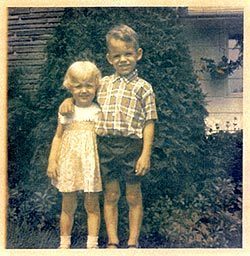The wiser narrator
![[Otterbein University’s iconic Towers Hall. My room this winter is on the ground floor, just right of center.]](https://i.gr-assets.com/images/S/compressed.photo.goodreads.com/hostedimages/1423363743i/13612538._SX540_.jpg)
[Towers Hall, Otterbein. My room is on the ground floor, just right of center.]
The retrospective view, in life as in Alison Smith’s great memoir
I’ve lost count of how many times I’ve read Name All the Animals, by Alison Smith, one of my favorite memoirs. I four years ago, and this semester I’m teaching it to a class of honors freshmen students under a coming-of-age memoirs theme. At the time of my review, one of the story’s most striking aspects to me was its scenic quality. I wrote, “There isn’t much authorial distance: narrated by a bereft girl, with scant mature perspective, the story has a poignant immediacy.”
How I disagree now with my (slightly) younger self! Though Smith is a scenic and subtle writer whose story breathes on the page, and is deeply embedded in her teenage life, there’s no pretense that a high school girl wrote this. Smith’s voice palpably changes at times (as when she fills us in on her parents’ early lives), and there are even more overt cues, including the standby “writer-at-her-desk now” move, “I remember.”
Why did I not see this? I suppose I got lost in the story, plus at the time I was trying to enhance the scenic quality of my own Shepherd: A Memoir. One’s response to a book is, to a large degree, a selfie. You, now. Which is why and how I learned not to teach certain great memoirs to undergraduates. They have to find a book’s characters relatable. Maybe one of the few advantages of age is that we can relate to a wider swath of humanity.
On Tuesday, when my freshmen and I had our first talk about Name All the Animals, with a class of juniors and seniors I discussed Jo Ann Beard’s astonishing essay “The Fourth State of Matter.” Now there’s a memoir essay that seems to flagrantly violate the aesthetic principle that, in literary memoir, the writer must not merely present the story as it happened then but must reflect on its meaning for her now.
In their own work, I’ve urged my upper-classmen to work in the middle of the scene-to-exposition/reflection continuum. So, in a sense, Beard’s essay seemed a risky model. I read to them a passage of Sven Birkerts tying himself in knots in The Art of Time in Memoir (reviewed) over Beard’s essay:
Missing almost entirely from Beard’s rendered scenes and situations is the reflective voice that I have suggested is the sine qua non of the genre, vital for establishing the crucial tension of perspective. But Beard’s mode of presentation compensates, for this; she makes up the deficit through her structural artifice of juxtaposing two or more distinct time lines to create a comparable tension of “then and now” or “then and then.”
If you’ve read and re-read Beard’s braided narrative, you’ll agree with Birkerts’ explanation, and momentarily you’ll almost be able to understand it.
“There are no rules in art,” I told the upperclassmen. “Only rules of thumb.”
•
[Alison and Roy Smith.]
Tonight’s forecast is for snow and a low of 11 degrees.“It’s the depth of winter,” I told my freshmen the other day, “but by the time the term ends, it’ll be spring.”
“Yeah,” one girl said, “but it’ll still be cold.”
“We’ll have warm days—some days will feel like it’s already summer.”
This is it, the wisdom of age, the retrospective view? The promise that warmth will return? They take winter far less personally than I do. Maybe inane reassurances are part and parcel of what I’ve come to offer.
I think of my students as kids, but I call them guys. “Okay, guys, let’s look . . .” On Tuesdays and Thursdays, as we ponder our tales of dangerous youth in iconic Towers Hall, second-semester freshmen faces look back at me. Thirteen girls and one boy. Their various editions of Name All the Animals bristle with sticky notes.
Last Thursday an icy rain fell too late to cancel school, and between about 8 and 10 o’clock walking was treacherous. One member of our honors seminar fell climbing the steps to her first class and hit her head. I crept as if on eggshells, going to the library at 9, but I almost went down six times.
Yet already there’s been a palpable change. Though we’ve just passed through a frigid period, the ground forever icy and snowy, you can feel the solar energy gathering its power. On Tuesday, a couple of students and I struggled to get the room’s blinds down, jamming ourselves into arched gothic window frames to subdue crooked louvers, so I could show a film clip related to Name All the Animals.
At home as at school, rooms fill newly with light. It always happens—this I know—yet always it seems news worth noting, this yearly planetary miracle. Here comes the sun.
[Alison Smith reading a short story or maybe a concise essay.]




